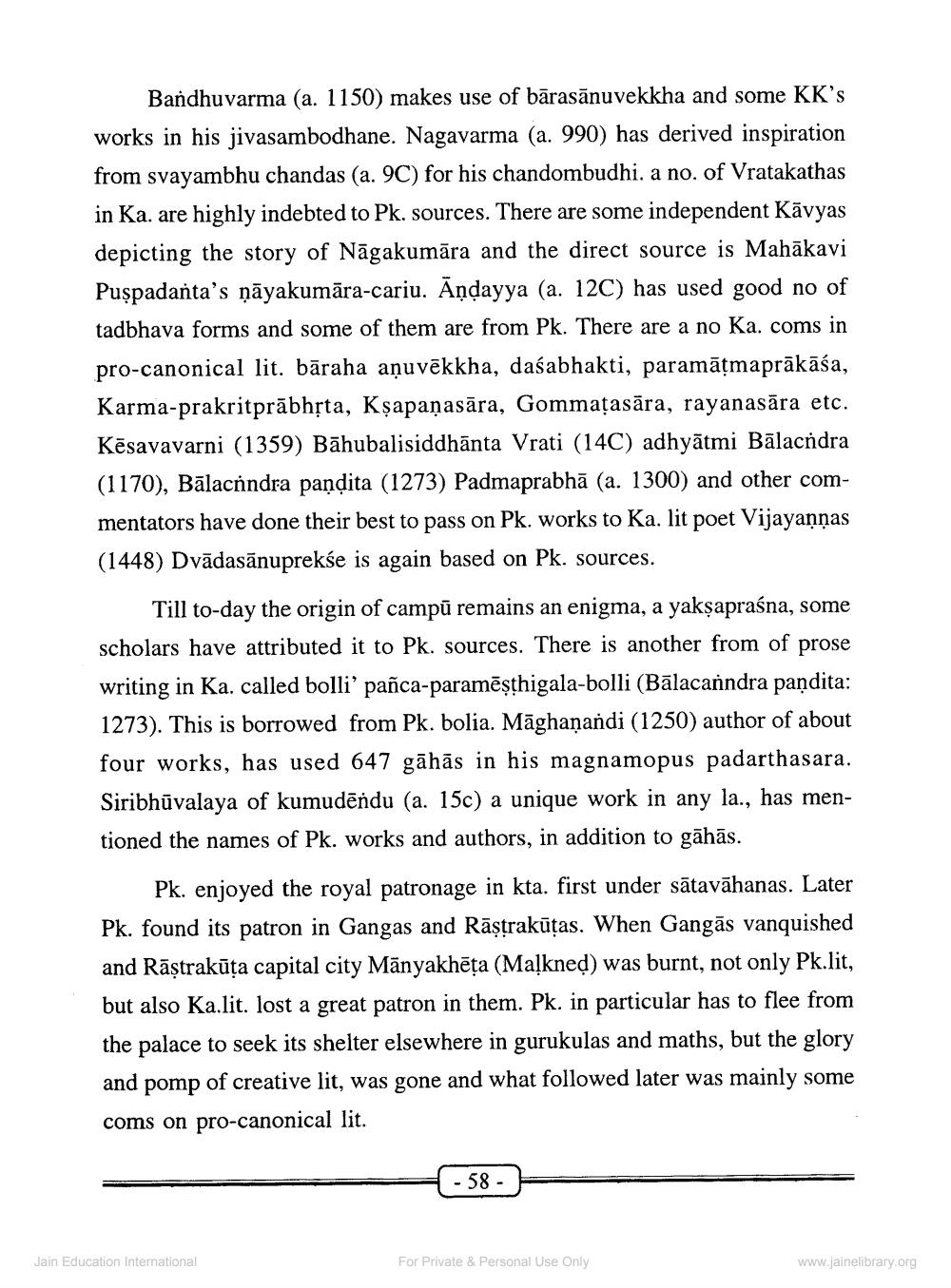________________
Bandhuvarma (a. 1150) makes use of bārasānuvekkha and some KK's works in his jivasambodhane. Nagavarma (a. 990) has derived inspiration from svayambhu chandas (a. 9C) for his chandombudhi. a no. of Vratakathas in Ka. are highly indebted to Pk. sources. There are some independent Kāvyas depicting the story of Nāgakumāra and the direct source is Mahākavi Pușpadaňta's ņāyakumāra-cariu. Āņdayya (a. 12C) has used good no of tadbhava forms and some of them are from Pk. There are a no Ka. coms in pro-canonical lit. bāraha anuvēkkha, daśabhakti, paramātmaprākāśa, Karma-prakritprābhịta, Kșapaņasāra, Gommațasāra, rayanasāra etc. Kēsavavarni (1359) Bāhubalisiddhānta Vrati (14C) adhyātmi Bālacndra (1170), Bālacắndra pandita (1273) Padmaprabhā (a. 1300) and other commentators have done their best to pass on Pk. works to Ka. lit poet Vijayaņņas (1448) Dvādasānuprekśe is again based on Pk. sources.
Till to-day the origin of campū remains an enigma, a yakşapraśna, some scholars have attributed it to Pk. sources. There is another from of prose writing in Ka. called bolli' pañca-paramēșthigala-bolli (Bālacanndra paņdita: 1273). This is borrowed from Pk. bolia. Māghaṇandi (1250) author of about four works, has used 647 gāhās in his magnamopus padarthasara. Siribhūvalaya of kumudēndu (a. 15c) a unique work in any la., has mentioned the names of Pk. works and authors, in addition to gāhās.
Pk. enjoyed the royal patronage in kta. first under sātavāhanas. Later Pk. found its patron in Gangas and Rāstrakūtas. When Gangās vanquished and Rāștrakūța capital city Mānyakhēța (Maļkned) was burnt, not only Pk.lit, but also Ka.lit. lost a great patron in them. Pk. in particular has to flee from the palace to seek its shelter elsewhere in gurukulas and maths, but the glory and pomp of creative lit, was gone and what followed later was mainly some coms on pro-canonical lit.
- 58 -
Jain Education International
For Private & Personal Use Only
www.jainelibrary.org




